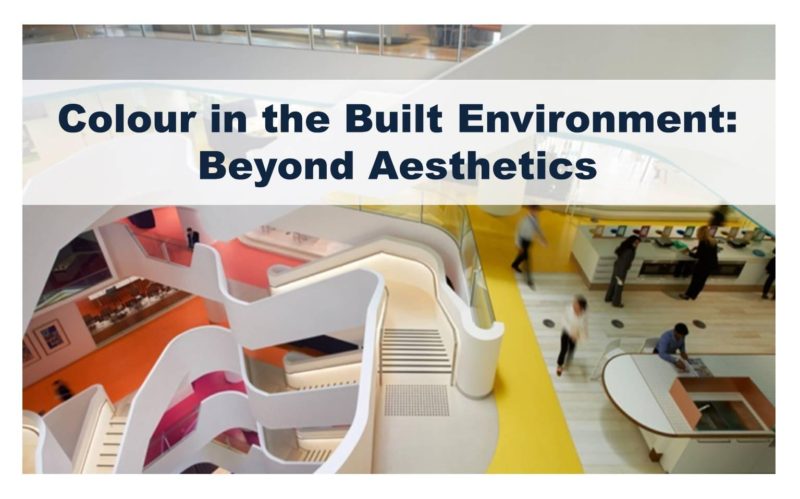
The main focus of this six-part Advanced Colour course is colour scheme development strategies that acknowledge aesthetics plus the ways in which colour and contrast can achieve specific outcomes in residential, commercial, hospitality, healthcare and aged care contexts.
Colour has the capacity to influence mood and ambience, enhance aesthetics as well as achieve specific design outcomes in the built environment, including:
- Attract attention of end users/target market/clients
- Encourage interaction and engagement
- Humanise industrial environments
- Support orientation and wayfinding strategies
- Enhance the safe operation of daily activities
The course is divided into two main components as follows.
Exterior Colour – Construction materials, cladding, paint surfaces
- Specified vs. Perceived colour: How to allow for this visual difference
- Counteracting the simultaneous contrast effect (Exterior colour and contextual colour)
- Options for facade colour and architectural style: From Heritage colour to contemporary colour
- Colour strategies – Sectional Colour, Monochromatic, Monotone, ‘New Neutrals’, Soft Colour Earth palettes
- Exterior paint technologies: Matching appropriate paint to substrate
- Colour Scheme specification development: Minimising ambiguity and error for client and tradespeople
Interior Colour – Paint, finishes, cladding, construction materials
- Colour scheme strategies to attract the target user/market, encourage engagement, support orientation and wayfinding strategies and support the safe operation of daily activities.
- Colour scheme strategies for Residential, Retail, Hospitality, Commercial, Healthcare and Aged Care
- Colour Scheme options/trends: Saturated Colour, Polychromy, Soft Colour, and Colour Discords
In late 2016, I reviewed and updated the Advanced Colour course component of the Diploma course for Sydney Design School and incorporated this course content.
This course content is constantly updated and informed by my design practice, research and trends. In addition, it is based on TEQSA-compliant course content that I developed for the University of Sydney, Faculty of Architecture, Design & Planning (Designing with Colour I and Designing with Colour II).